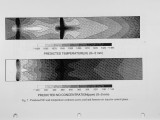| OCR Text |
Show Burnout Reburn fuel C02, H20, NH3 \* N0 HCN t^ NO ) ^ N2 CHi etc + NO NHi/HCN -i- NO Char/soot/CO + NO Primary fuel NO (fuel, thermal, prompt) C02, CO, H20, 02, Ash, SO2 Previous studies have demonstrated that coal reburning is an effective technique for reducing N O emissions from combustion processes. Reductions of over 6 0 % in the N O emission have been reported depending on operating conditions and coal type and the higher volatile, reactive, bituminous, sub-bituminous and lignite coals the most effective rebum coals [3,4]. Fig. 1 Reburn principle and possible N O formation and reduction routes. The operating temperature and stoichiometry of the rebum zone are among the parameters which have the greatest effect on the N O reduction efficiency since both are closely coupled with the physical and chemical behaviour of the rebum coal in the reburn-zone and the N O chemistry. Temperature influences the balance between N O forming and reducing reactions via the nitrogenous intermediate species H C N and N F b [7]. Temperature and stoichiometry also control the production and consumption of volatile C H fragments, and hence N O reduction by this route [8,9]. The heterogeneous char-NO reaction rates are also temperature dependant [10]. The effect of temperature on NOx reduction by coal- reburning has received limited attention. Chen et al [1] studied temperature related effects in a 3.0MW down-fired furnace with both gas (propane) and coal as rebum fuels. In their experiments, cooling coils were added to the lower half of the fuel-rich reburning zone, reducing the temperature at the exit from 1200°C to 930°C. With propane reburning, an increase in the N O x emissions was observed, but with bituminous coal reburning, adding additional cooling significantly reduced the exit N O emissions. Mixing effects are also of importance in rebum processes. Poor mixing can result in insufficient penetration of the coal jets into the reaction zone, leading to poor N O reduction. However, a potential benefit is that poor mixing can promote the production of localised fuel-rich pockets, which can enhance N O reduction by fuel-generated reducing agents such as hydrocarbon (CH) fragments and intermediate nitrogenous species ( H C N and NHi). Mixing patterns in practical utility boilers and furnaces are usually quite difficult to replicate in pilot-scale or experimental furnaces, the main problem being that in the former, mixing occurs much more slowly. Knill et al [11] investigated the influence of mixing in a 2.5 M W , furnace using four movable coal injectors situated around the circumference of the furnace pre-combustor and angled so as to converge at the centre of the furnace. Experimental data from tests carried out at low and high mixing rates showed that mixing effects were important for richer rebum zone conditions (SR2 = 0.77 - 0.84), where the N O x emission was 50 to 130 p pm lower at the high mixing rate. In contrast, there was little effect of mixing at higher values of SR2 (0.87 - 0.94. Chen et al [1], compared the mixing performance of four 7 c m injectors with a single 22 c m injector at various operating conditions. They found that the single-jet |





















